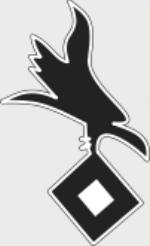Dragon DRR60549 German Early Production Sd. Kfz. 162 Jagdpanzer IV L/48 Tank Destroyer with Armored Side Skirts - "White 212", Fallschirm Panzer Division 'Hermann Goring', East Prussia, 1945 (1:72 Scale)
"If the tank succeeds, then victory follows."
- Major-General Heinz Guderian, "Achtung Panzer!"
 Jagdpanzer (JgPz), German: "Hunting tank", is a name for German tank destroyers. It typically refers to designs based upon existing tank chassis with a well-armoured fixed superstructure, mounting an anti-tank gun with limited traverse in the front. The Jagdpanzer designs followed on from the more lightly armoured Panzerjager designs which took an anti-tank gun and mounted it on top of a tank chassis with supplementary armour fitted around the gun crew. Without the complexity of the rotating turret, Jagdpanzer designs could be quickly produced which was important in supplying fighting vehicles to the Russian front. However in lacking a turret the Jagdpanzers were more limited in use. Generally they were used as a second line or reserve in the attack or to form a defensive line.
Jagdpanzer (JgPz), German: "Hunting tank", is a name for German tank destroyers. It typically refers to designs based upon existing tank chassis with a well-armoured fixed superstructure, mounting an anti-tank gun with limited traverse in the front. The Jagdpanzer designs followed on from the more lightly armoured Panzerjager designs which took an anti-tank gun and mounted it on top of a tank chassis with supplementary armour fitted around the gun crew. Without the complexity of the rotating turret, Jagdpanzer designs could be quickly produced which was important in supplying fighting vehicles to the Russian front. However in lacking a turret the Jagdpanzers were more limited in use. Generally they were used as a second line or reserve in the attack or to form a defensive line.
The first prototype of the Jagdpanzer IV was presented to the German Fuehrer in October 1943, with production of an eventual 769 pieces commencing in January 1944 by Vomag. Based on the chassis, running gear and drive train of the Panzer IV, this specialist tank hunter was low-slung and had well-sloped armor. The vertical glacis of the Pz.Kpfw. IV was replaced by two angled plates that provided a sharp nose. The 24-ton Early-Production model mounted a 7.5cm PaK39 L/48 gun in a fixed superstructure.
All these distinctive features are evident in Dragon Armors newest 1/72 scale fully built-up model of a Jagdpanzer IV from the Panzer-Division Hermann Gring, which served in East Prussia in 1945. In late 1944 this elite division had been transferred to East Prussia-Kurland to halt the Russian juggernaut, and the division subsequently fought against the Vistula-Oder Offensive and in Silesia.
This early production Jagdpanzer IV L/48 model is exquisitely finished in a distinctive three-color camouflage scheme, with white tactical numbers prominently painted on the superstructure sides. Another interesting aspect of this detailed model is the armored side skirts affixed to the hull sides.
Sold Out!
Dimensions:
Length: 4-1/2-inches
Width: 1-3/4-inches
Release Date: September 2012
 Historical Account: Panzer Division Hermann Goring was established in May 1943 when Division Hermann Goring was reformed. It was sent to Sicily to fight the expected allied landings and became one of the few reliable Axis formations to remain in place after the Italian front collapsed on Sicily. It fought at Gela and Priolo but was forced to withdraw due to heavy Allied naval bombings. Despite suffering significant losses, the division continued fighting a defensive battle, which enabled other german forces to evacuate Sicily and take up the fight in Italy. The division was stationed near Naples when the Italian government surrendered to the Allies and was used to disarm the Italian troops in the Salerno area. After the Allies landed at Salerno on September 9th, the division was ordered back to the Volturno-Termoli Line. Later on, it retreated with the rest of the German forces to the nearly impregnable Gustav Line, where it was replaced in the front lines by infantry and ordered into tactical reserve.
Historical Account: Panzer Division Hermann Goring was established in May 1943 when Division Hermann Goring was reformed. It was sent to Sicily to fight the expected allied landings and became one of the few reliable Axis formations to remain in place after the Italian front collapsed on Sicily. It fought at Gela and Priolo but was forced to withdraw due to heavy Allied naval bombings. Despite suffering significant losses, the division continued fighting a defensive battle, which enabled other german forces to evacuate Sicily and take up the fight in Italy. The division was stationed near Naples when the Italian government surrendered to the Allies and was used to disarm the Italian troops in the Salerno area. After the Allies landed at Salerno on September 9th, the division was ordered back to the Volturno-Termoli Line. Later on, it retreated with the rest of the German forces to the nearly impregnable Gustav Line, where it was replaced in the front lines by infantry and ordered into tactical reserve.
When the Allies landed at Anzio on January 22nd, 1944, where it was used to encircle the Allied beachhead. It fought ferociously at Cisterna, fighting the Allies to a virtual standstill. It was redesignated
Fallschirm-Panzer Division Hermann Goring in April 1944 and continued to defend northern Italy until the end of the war.





 Excellent reproduction
Excellent reproduction 






![German Mid Production Sd. Kfz. 181 PzKpfw VI Tiger I Ausf. E Heavy Tank - Unidentified Unit, Normandy, 1944 [D-Day Commemorative Packaging] (1:72 Scale)](http://cdn4.volusion.store/qh9e9-jdqv9/v/vspfiles/photos/UNI85604-1.jpg?v-cache=1740197136)

